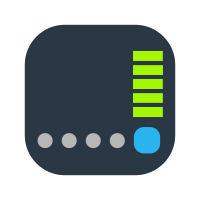Last edited:
So I'm still poking around my network trying to understand all the ports and how they're interacting. Eventually I'll get some reverse proxies set up, but I want to make sure I clearly understand what is going on at the base level before moving on.
I had DSM set on the default 5000/5001 ports. My android mobile apps (DS Cam & DS File) worked by simply loading in myname.synology.me for the address. I then changed the DSM ports to 38400/38401 and added those ports to my router port forwarding (ports 500,5001,38400,38401 all forwarded for now) and I lost all access with my apps. I tried myname.synology.me:5001 & myname.synology.me:38401 with no luck. If I switched DSM back to 5000/5001, then the apps worked again.
I then tried switching DSM to 38400/38401 and going into the application portal and changing the default ports for File Station to 38440/38441 and added those ports to my growing port forwarding list. myname.synology.me did not work in the apps, but myname.synology.me:38441 did.
Can someone please correct me if my conclusions below are wrong? Given my recent history I want to make sure I'm not making the wrong assumptions.
1. Changing DSM port to something else besides 5000/5001 disables all default ports for mobile app access.
2. In absence of reverse proxy, once #1 occurs, the default ports for the application must be updated under the application portal in DSM and added to port forwarding.
I had DSM set on the default 5000/5001 ports. My android mobile apps (DS Cam & DS File) worked by simply loading in myname.synology.me for the address. I then changed the DSM ports to 38400/38401 and added those ports to my router port forwarding (ports 500,5001,38400,38401 all forwarded for now) and I lost all access with my apps. I tried myname.synology.me:5001 & myname.synology.me:38401 with no luck. If I switched DSM back to 5000/5001, then the apps worked again.
I then tried switching DSM to 38400/38401 and going into the application portal and changing the default ports for File Station to 38440/38441 and added those ports to my growing port forwarding list. myname.synology.me did not work in the apps, but myname.synology.me:38441 did.
Can someone please correct me if my conclusions below are wrong? Given my recent history I want to make sure I'm not making the wrong assumptions.
1. Changing DSM port to something else besides 5000/5001 disables all default ports for mobile app access.
2. In absence of reverse proxy, once #1 occurs, the default ports for the application must be updated under the application portal in DSM and added to port forwarding.



